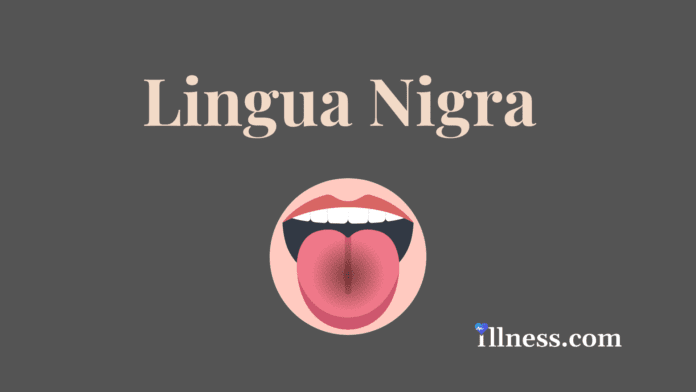Overview Of Lingua Nigra
Lingua Nigra is synonymous with hairy tongue. Hairy tongue is an uncommon, benign condition that is also known as black hairy tongue or lingua nigra. It is characterized by abnormal elongation and blackish or dark brownish discoloration or “staining” of the thread-like elevations (filiform papillae) that cover most of the tongue’s surface (dorsum linguae). Such changes often begin at the back (posterior) region of the top of the tongue and extend toward the front (anterior) of the tongue’s surface but never involve the undersurface.
The specific underlying cause of hairy tongue is unknown. However, possible predisposing factors may include poor oral hygiene and overgrowth of pigment-producing bacteria or fungi in the mouth, treatment with certain antibiotic medications, smoking, chewing tobacco, and/or mouthwash use.
Commonly Associated With
- Black Hairy Tongue
- Black Tongue
- Lingua Villosa Nigra
Causes Of Lingua Nigra
Hairy tongue is thought to result from failure of the normal “shedding” (desquamation) of the outermost layer of the filiform papillae, overgrowth of certain pigment-producing bacteria or fungi normally present in the mouth, and an abnormal accumulation of pigment residues, keratin, or other debris in the region. (Keratin is a fibrous protein that is a primary component of the outermost layer of the skin, nails, and hair.) Although the specific underlying cause of hairy tongue remains unknown, several potential predisposing factors have been implicated. Such factors include treatment with certain antibiotic medications (e.g., tetracycline therapy, which may lead to overgrowth of certain fungi); the use of particular oral bismuth-containing medications; the use of mouthwashes; smoking; chewing tobacco; excessive alcohol consumption; and/or poor oral hygiene. Hairy tongue is not infectious nor does it lead to oral cancer.
Symptoms
Hairy tongue is characterized by elongation and overgrowth (hyperplasia) of the filiform papillae into “hair-like” projections and the development of a dark brown or black coating on the surface of the tongue. Such changes typically occur in a triangular region in front of the circumvallate papillae, which are the largest papillae of the tongue. (These nodular elevations, which typically range from eight to 12 in number, are arranged in the form of a “V”.) As noted above, the back region of the top of the tongue may initially be affected with subsequent extension toward the front.
Many individuals with hairy tongue have no associated symptoms (asymptomatic). However, some with the condition may be affected by nausea, gagging, altered taste, bad breath (halitosis), and/or other associated symptoms.
In some cases, hairy tongue may spontaneously disappear. In addition, it typically subsides with appropriate oral hygiene and the elimination of other predisposing factors.
Treatment Of Lingua Nigra
In individuals with suspected hairy tongue, receiving a thorough evaluation by physicians, dentists, and/or oral surgeons is important to exclude other underlying conditions and to confirm a diagnosis of hairy tongue. Recommended treatment measures typically include removing potential predisposing factors, such as stopping smoking, discontinuing antibiotic therapy if possible and receiving proper alternative treatments as necessary under a physician’s direction, and/or other appropriate steps. In addition, affected individuals should speak with their dental specialists for guidance concerning appropriate measures to improve oral hygiene in their particular case. Such measures typically include using a soft-bristled toothbrush to regularly cleanse the tongue.
Other
Affected Populations
In males or females with hairy tongue, the age of onset is variable. Hairy tongue most commonly affects adults; however, it may sometimes occur during childhood or adolescence. It is not an inherited disease.
Related Disorders
There are additional disorders and conditions that may result in abnormal color changes or other alterations of the tongue. Such conditions and disorders are typically characterized by symptoms and physical findings that differ from those associated with hairy tongue.



